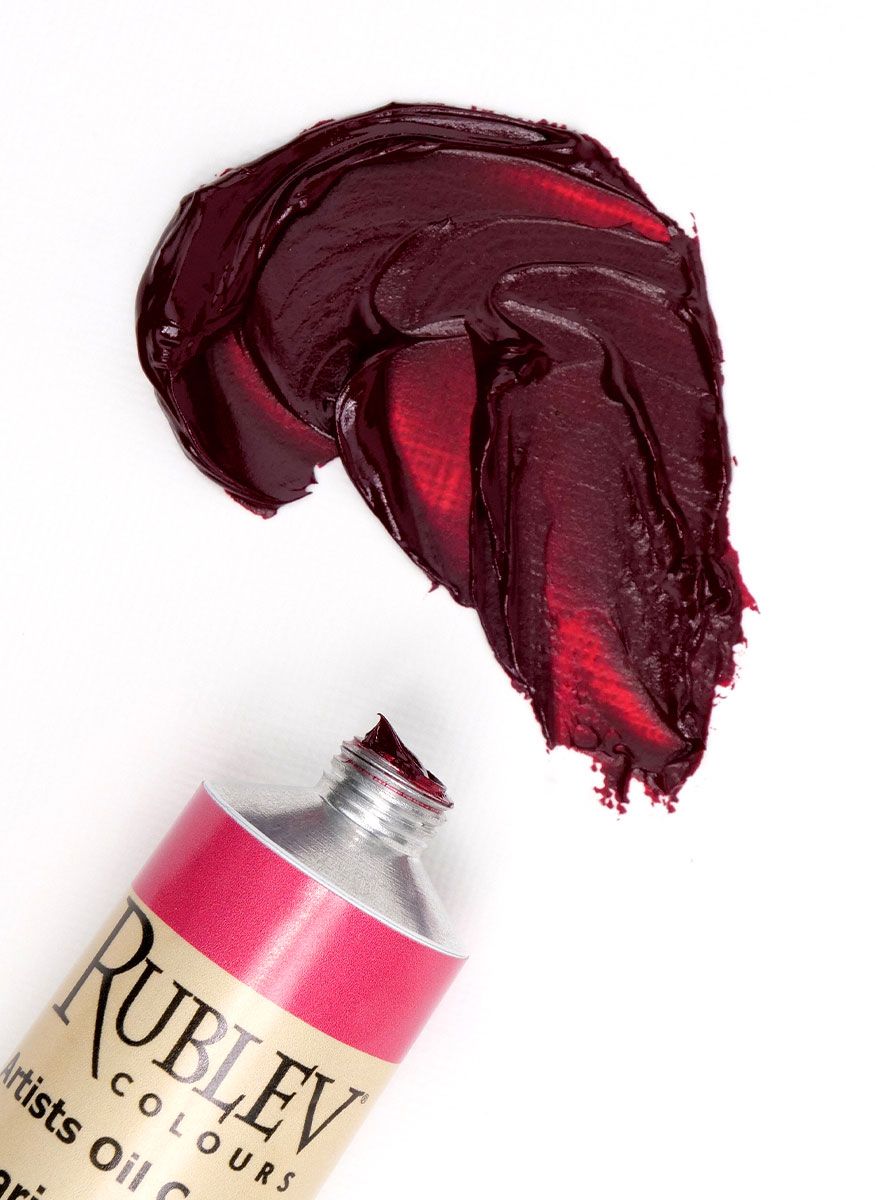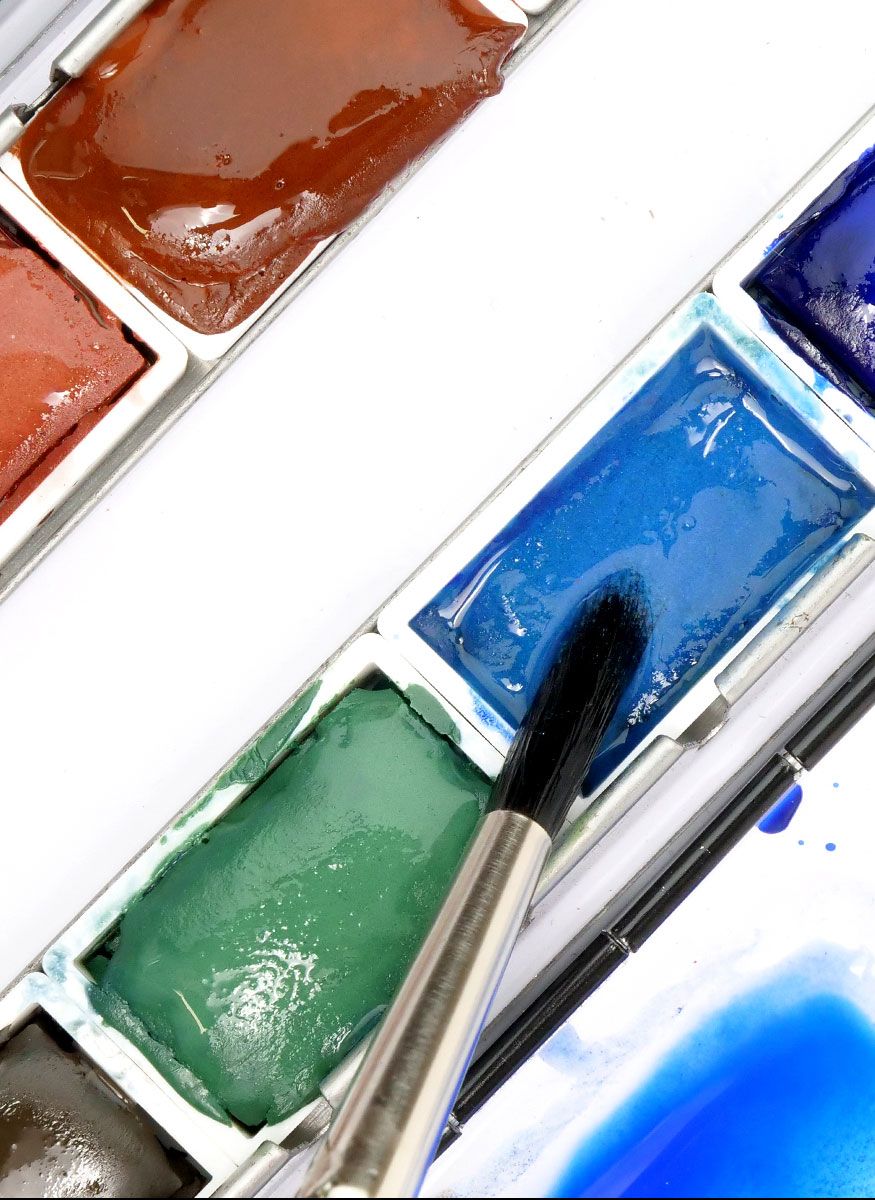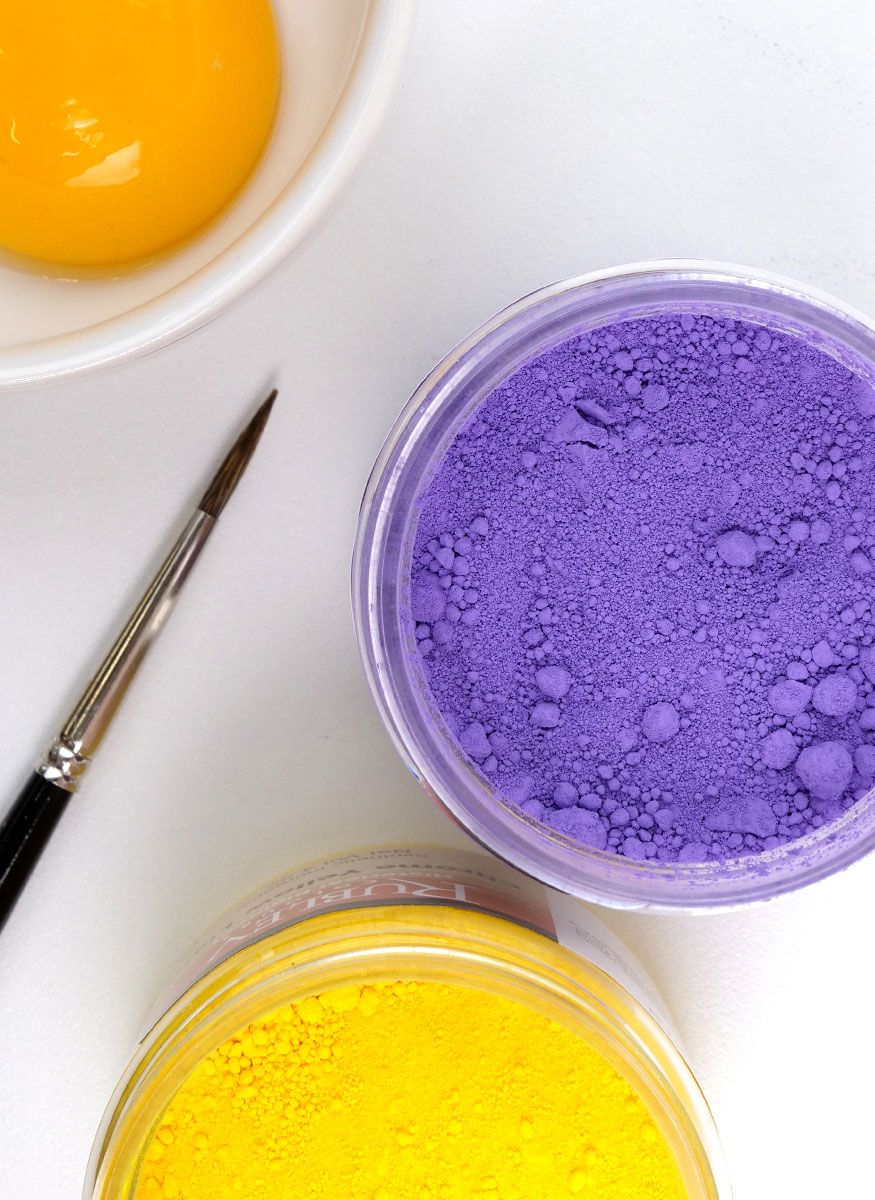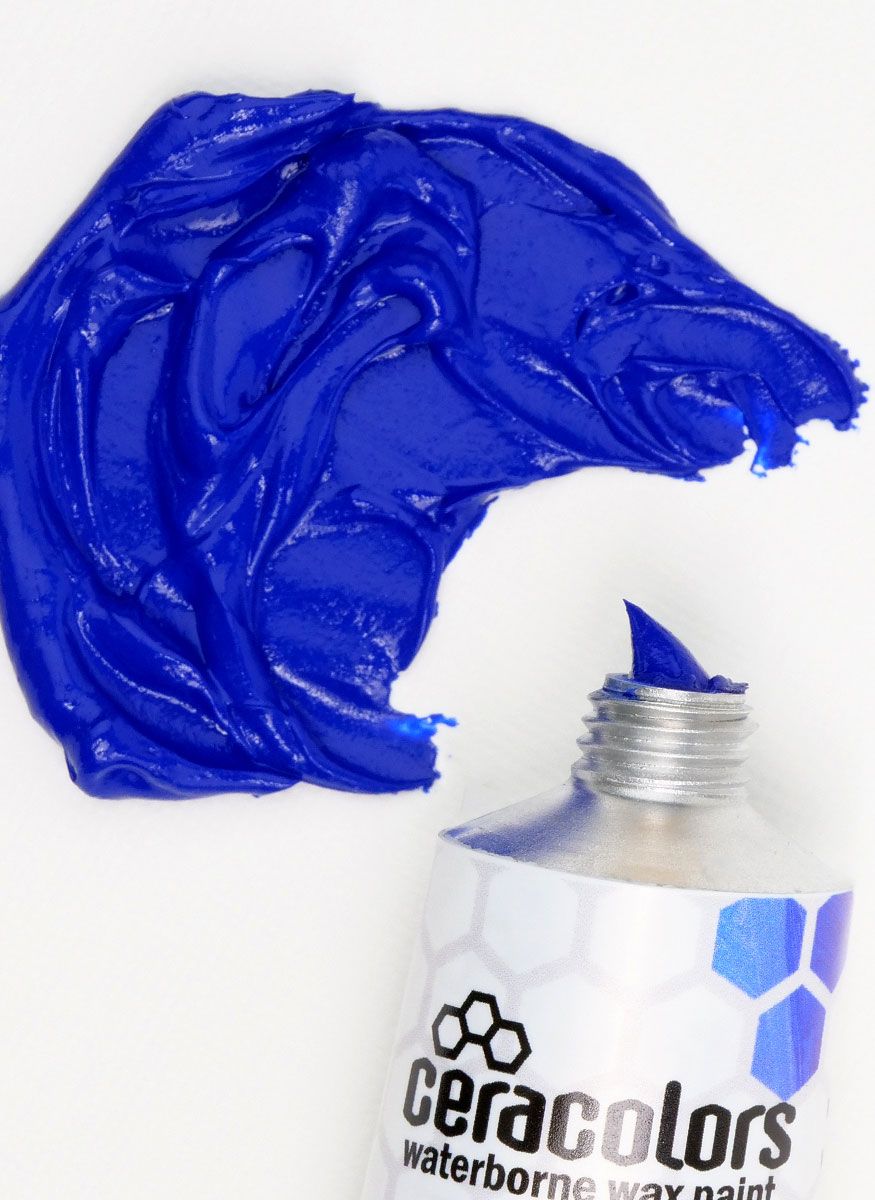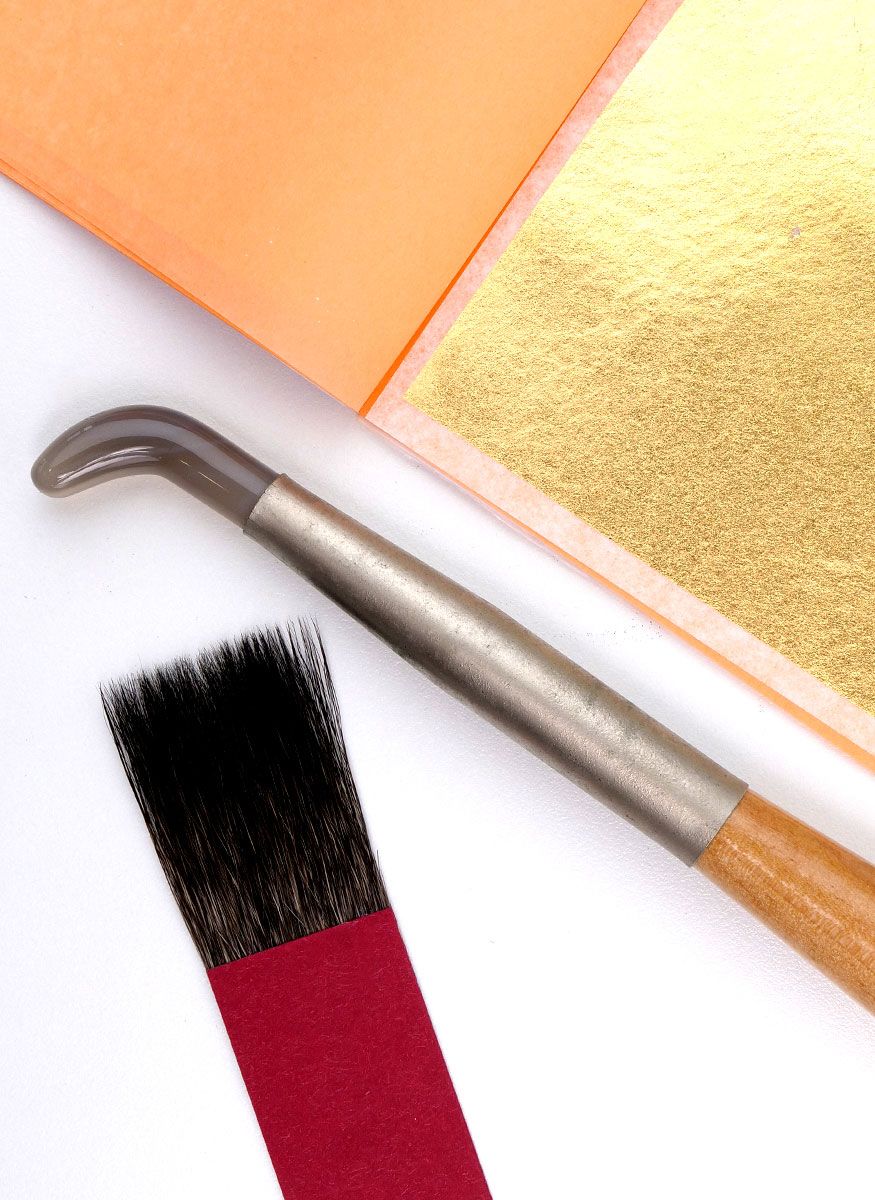Shop by Medium
What makes Rublev Colours different from all others
-
Series
The series indicates the relative price of the color, which is determined mainly by the cost of the pigment. Series 1 is the least expensive, and Series 10 is the most expensive color.
-
Color Range and Color Name
We identify the Color Range with either Artists Oil Colors for the range of historical oil colors or Modern Oil Colors for the range of modern colors—pigments developed after the late nineteenth century. The Color Name is the name of the color that is not necessarily unique to a range or medium. For example, Lazurite is available in oil colors and watercolors and as a dry pigment powder. For complete information, including videos of the color, visit the individual product page of the color.
-
Lightfastness
The lightfastness of pigments is listed on all labels of Rublev Colours Artist Oils and Watercolors. Shown here is the ASTM rating for the pigment in oil. I is the highest lightfastness available in this system, and V is the lowest. Both ratings I and II are considered permanent for artists’ use. ASTM stands for the American Society for Testing and Materials, an organization that has set standards for the performance of art materials, including a color’s lightfastness. In this example, the standard is ASTM D4302, the Standard Specification for Artists’ Oil, Resin-Oil, and Alkyd Paints. When the standard is unavailable for a pigment, we provide our own lightfastness rating based on the same test methods in the ASTM standards. For more information about the permanence and compatibility of Rublev Colours Artist Oils and ASTM standards, visit Artist Oils Composition and Permanence.
-
33% More Than Most Other Brands
The standard tube of Rublev Colours Artist Oils is 50 milliliters (50 ml) or 1.69 fluid ounces. Each 50 ml tube has 33% more color than 37 ml tubes of other brands and 25% more color than 40 ml tubes. Larger tubes, 150 ml (5.07 fluid ounces), are also available.
-
No Addtives
While other brands of oil colors contain fillers, pigment stabilizers, and other additives, Rublev Colours Artists Oils are simply pigment and oil. Without these additives, you may find a little oil coming out of the tube. The separation of oil and pigment in artist-grade paint does not indicate poor quality; it often means that little or no additives were used.
The Vehicle or binder is always identified on the label, such as Linseed Oil or Walnut Oil.
-
Health and Safety
Other brands use the Art and Creative Materials Institute (ACMI) AP and CL Seals on their labels. AP stands for APPROVED PRODUCT and is usually accompanied by the word "Nontoxic." CL is an abbreviation for Cautionary Label and is used when risk and safety information is required on the label.
Our concern with the word "non-toxic" is that it is a marketing term that is largely unregulated. The term can mislead artists for several reasons: First, potentially toxic chemicals are likely present at some level in all products, regardless of risk assessment. Second, it is inappropriate to assume that all possible chronic hazards of chemicals are currently known. Third, personal exposure should be prevented when using chemical products. Indicating "non-toxic" on the label implies to some that the paints could be used for things not intended, such as body painting, painting with the fingers, tattooing, and decorating dishware.
For more information about the health and safety of artists materials, please visit Health and Safety.
-
Pigment Content
All Rublev Colours Artist Oils are single pigment colors except for the historical hue range of colors and mixed whites that contain multiple pigments. Each Pigment is identified by its Colour Index Generic Name (CIGN). For example, Ultramarine Blue is Pigment Blue 29, abbreviated PB29. More than one pigment abbreviation indicates multiple pigments. Some historical colors in the range of Rublev Colours Artist Oils are not registered in the Colour Index and so are not assigned a Colour Index Generic Name, such as the mineral lazurite (natural ultramarine). The label also identifies the chemical composition of the pigment on the line below the Colour Index abbreviation.
We work closely with artists
and we want to be your colorhouse.
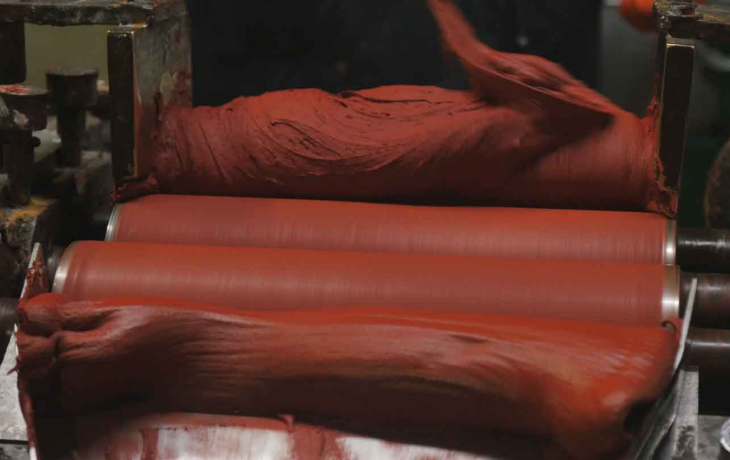

How we make Rublev Colours Oils different from all others
We select those that not only make good colors in oil, but provide a diverse range of texture, body and opacity. We prepare each pigment by baking them in low-temperature ovens to remove all traces of adsorbed moisture.
Next, we mix the pigment with oil to obtain a dense, homogenous mixture. The paste is allowed to “sweat” overnight before grinding.
We grind the paste on three-roll mills at least 3 or 4 times. We grind our paints more times than others, because we do not use stabilizers that alter the body and consistency of the paint. Often colors are ground 6 to 8 times before we consider them ready. We age the batch for several months and then regrind.


Color Particle by Particle
The particles of natural pigments are larger and more varied than pigments in modern artists’ oil colors. When we remember how crystalline pigments, such as azurite, malachite, lazurite, were used in old masters’ paintings, it is easy to understand how these beautiful surfaces with broken lights were obtained. An examination, for instance, of azurite particles under the microscope at once reveals the beautiful mass of blue and blue-green crystals, reflecting light in all directions, and thus of course enhancing the visual effect.
No Additives
Rublev Colours Artists Oils do not contain additives, such as fillers, driers and stabilizers—simply pigment and oil. We use linseed oil in our paint sometimes with a small amount of heat-bodied linseed oil. Stabilizers, such as stearates and waxes that diminish the individual effects of pigments are not added. You will find different consistencies from color to color due to the characteristics of individual pigments. Some colors brush out long, others short and buttery and most are thixotropic.
Single Pigment Colors
When you see a color name on our label, you get just that—one pure pigment. For example, Rublev Colours Vermilion is not a hue, but the pure pigment—red mercuric sulfide. In a tube of Rublev Colours Verona Green Earth you will not find a mixture of pigments, but the real thing—green earth. And Rublev Colours Naples Yellow is pure lead antimonate. You won’t even find the word “genuine” used to describe Rublev Colours, because all colors are simply that—genuine.
Meticulously Crafted
We make Rublev Colours Artists Oils in small batches, meticulously crafting each color. Using natural and historical pigments means that we must take extra steps to prepare these colors into a useable paint, typically not required for modern synthetic pigments. All this requires more time and labor to make a finished product that is different from all other oil color brands—a difference you can clearly see and palpably feel.


